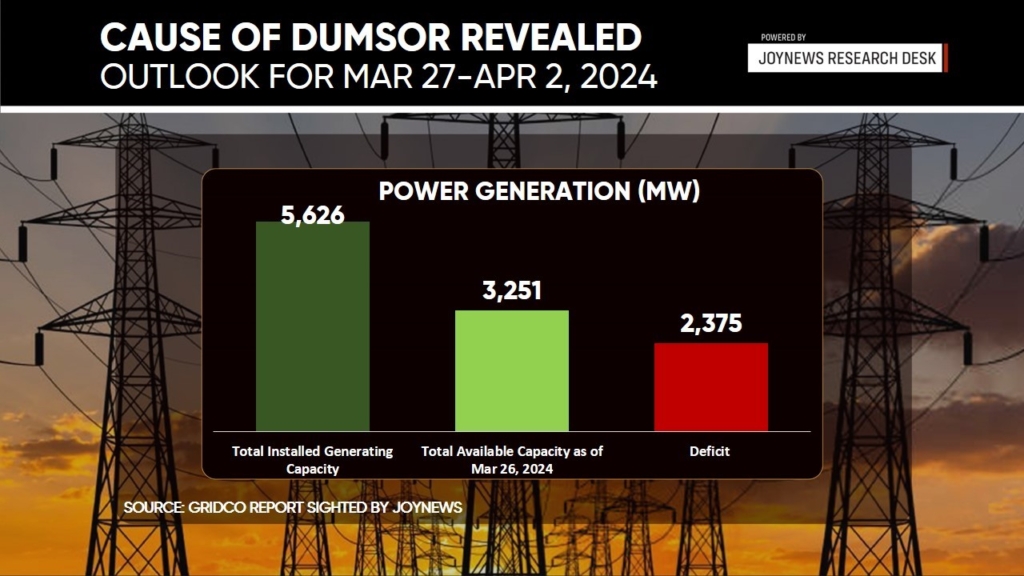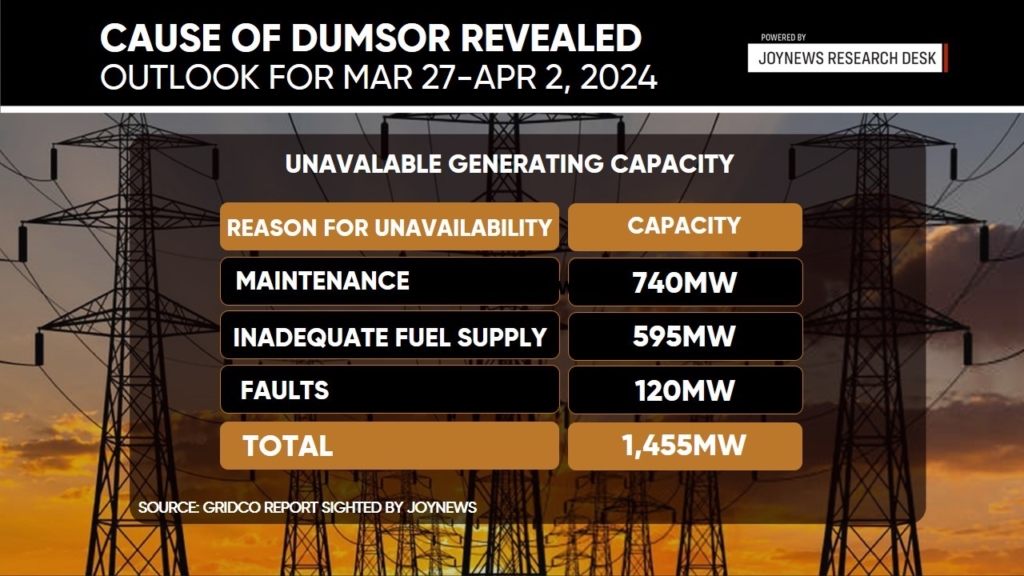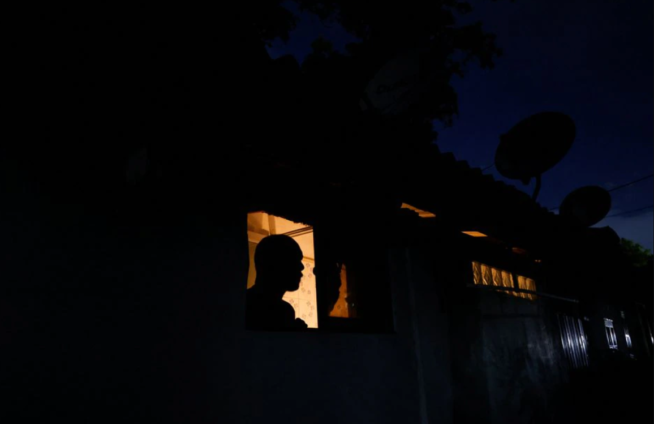The findings below are based on GRIDCo’s analysis of Ghana’s power supply situation from March 27 to April 2, 2024 and explains why Ghana has dumsor or load management.
GRIDCo has closely monitored Ghana's power generation crisis since the beginning of March 2024, acknowledging the challenges in meeting the country's electricity demand. The curtailment of power exports since March 27 reflects the severity of the situation, highlighting the need for immediate attention and strategic planning.
Ghana's peak demand has surged to 3,618 MW, significantly exceeding the available capacity of 3,251 MW. With an installed capacity of 5,626 MW, the nation is only utilizing approximately 58% of its total capacity, leaving a considerable deficit of 2,375 MW. This deficit is compounded by a 740 MW shortfall attributed to ongoing maintenance, further straining the electricity supply infrastructure.
Among the maintenance-related issues, 330 MW remains uncertain in terms of restoration timelines, adding complexity to the grid's stability. Additionally, 4 thermal plants, collectively capable of generating 595 MW, are offline due to inadequate fuel supply, while a fault in the TICO unit 3 plant has rendered 120 MW unavailable until December 2024, impacting the entire year's power generation by that capacity.
Consequently, Ghana faces a significant 1,455 MW shortfall in electricity generation capability, with gas supply limitations exacerbating the challenge. Despite efforts to reduce power exports by 40% during peak hours to prioritize local demand, the gap persists!
The hydroelectric landscape presents mixed outcomes, with the Akosombo dam maintaining a stable electricity generation due to its sufficient water levels, while the Bui dam's declining levels raise concerns. If the downward trend persists, the Bui dam's ability to generate power could be compromised, leading to its restricted usage to peak hours only.
Read also: There’s something mysteriously amiss somewhere about ongoing ‘dumsor’ – Gabby Otchere-Darko
To align generation capabilities with demand, Ghana resorted to implement power shedding measures, shedding 380 MW during normal times and an additional 505 MW during peak hours daily. The primary challenge remains the inadequate gas supply. Meanwhile, utilizing idle thermal plants can partially offset the 505 MW shortfall during peak times caused by fuel shortages or equipment faults.
Find summary of all the relevant data in the graphic below











About the writer:
Isaac Kofi Agyei is a Data & Research Analyst/Journalist at JoyNews based in Accra, where he covers mostly finance, economics, banking, and politics across Ghana and West Africa, from detailed analytical reports on all key issues to debt crises to IMF programmes. He also serves as the data and research correspondent for SBM Intelligence, an Africa-focused market/security leader in strategic research, providing actionable analyses of West Africa’s socio-political and economic landscape. With his solid academic background in economics and statistics and additional training from credible institutions such as the UNDP, Afrobarometr, Ghana Statistical Service, and a host of others, Isaac has honed his skills in effective data storytelling, reporting, and analysis.

Isaac Kofi Agyei
Latest Stories
-
Paris 2024: Opening ceremony showcases grandiose celebration of French culture and diversity
3 hours -
Spectacular photos from the Paris 2024 opening ceremony
4 hours -
How decline of Indian vultures led to 500,000 human deaths
4 hours -
Paris 2024: Ghana rocks ‘fabulous fugu’ at olympics opening ceremony
5 hours -
Trust Hospital faces financial strain with rising debt levels – Auditor-General’s report
5 hours -
Electrochem lease: Allocate portions of land to Songor people – Resident demand
5 hours -
82 widows receive financial aid from Chayil Foundation
5 hours -
The silent struggles: Female journalists grapple with Ghana’s high cost of living
5 hours -
BoG yet to make any payment to Service Ghana Auto Group
6 hours -
‘Crushed Young’: The Multimedia Group, JL Properties surprise accident victim’s family with fully-furnished apartment
6 hours -
Asante Kotoko needs structure that would outlive any administration – Opoku Nti
7 hours -
JoyNews exposé on Customs officials demanding bribes airs on July 29
7 hours -
JoyNews Impact Maker Awardee ships first consignment of honey from Kwahu Afram Plains
8 hours -
Joint committee under fire over report on salt mining lease granted Electrochem
8 hours -
Life Lounge with Edem Knight-Tay: Don’t be beaten the third time
9 hours

